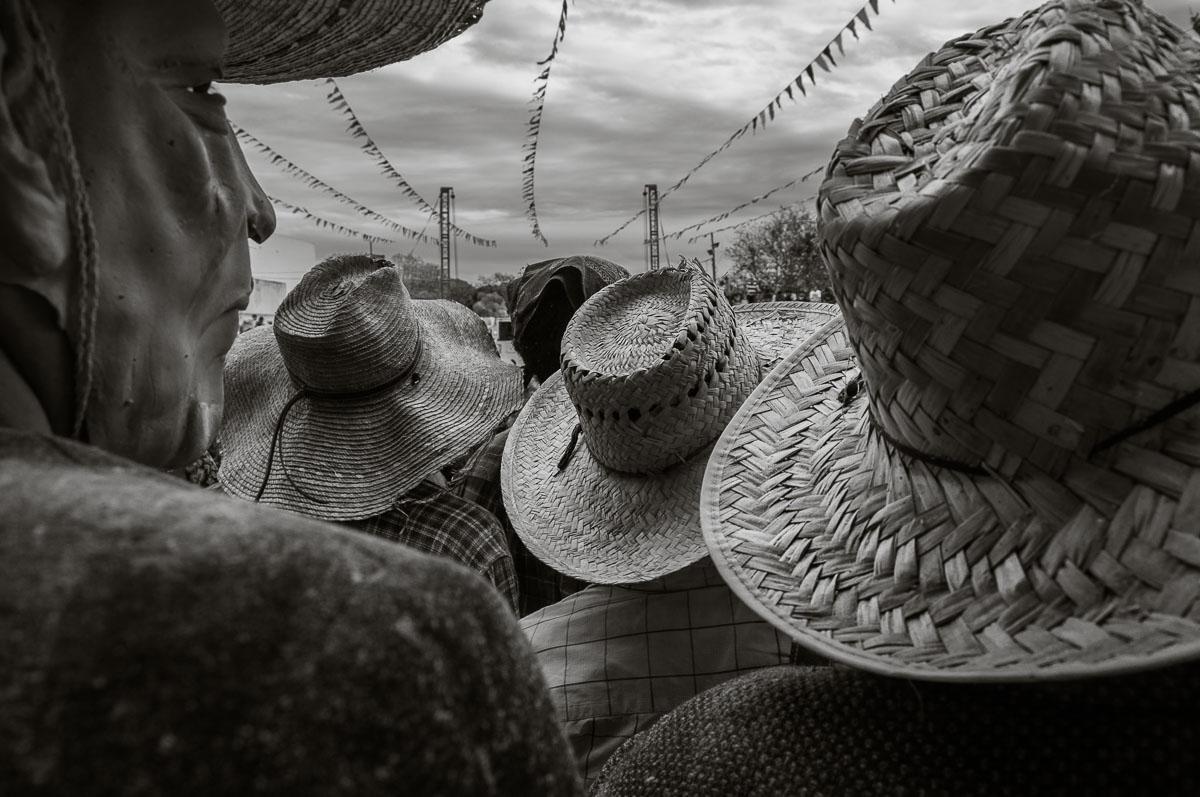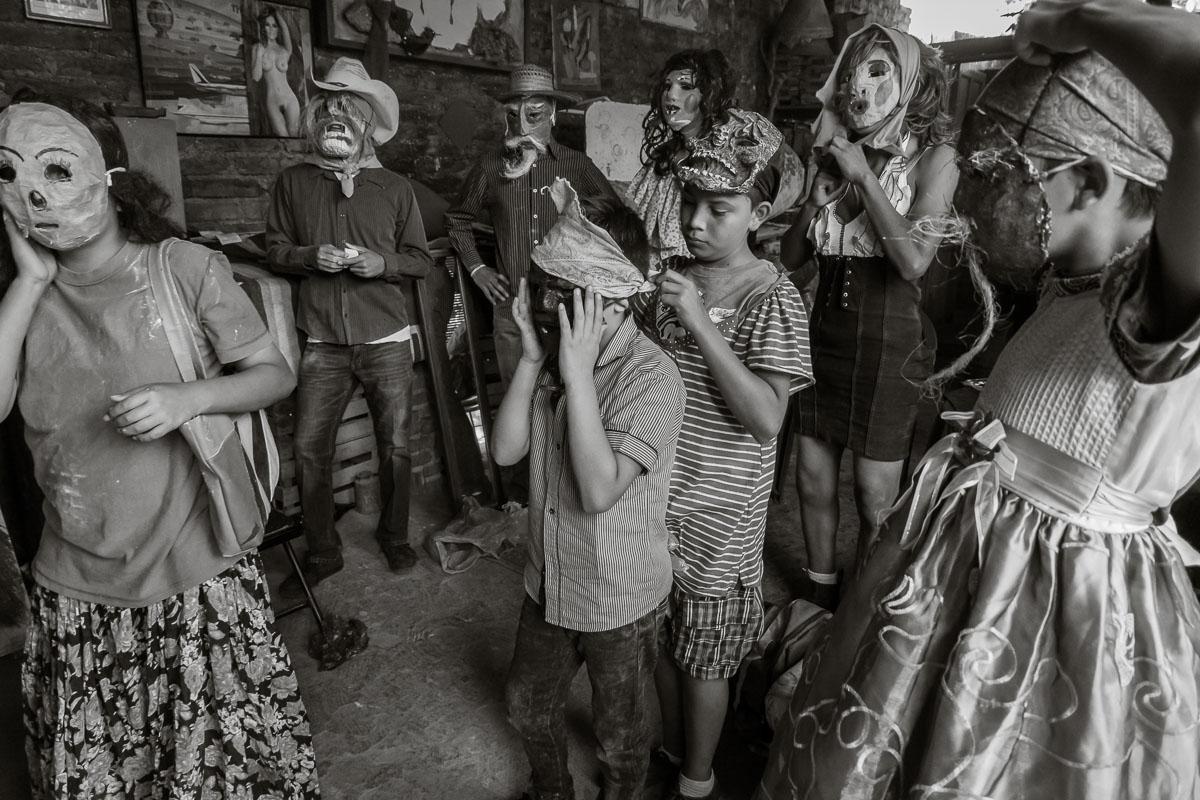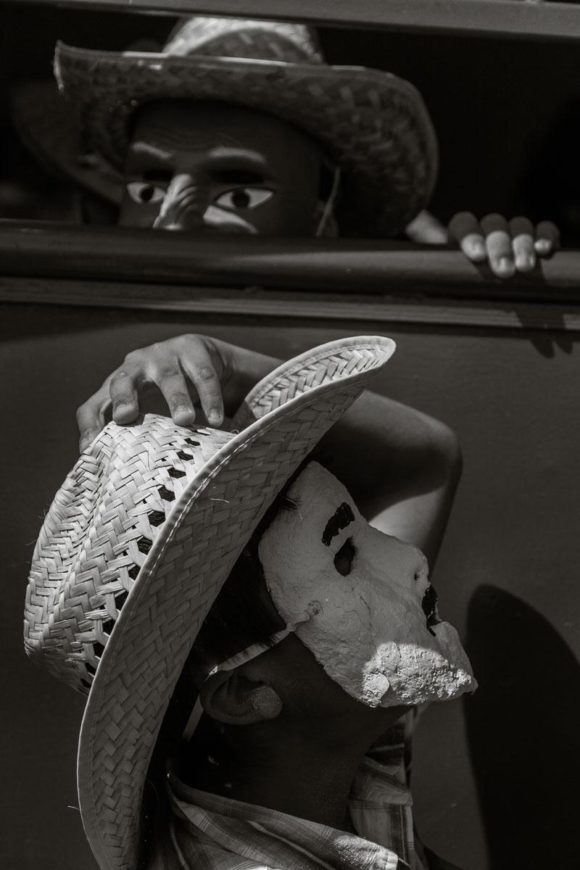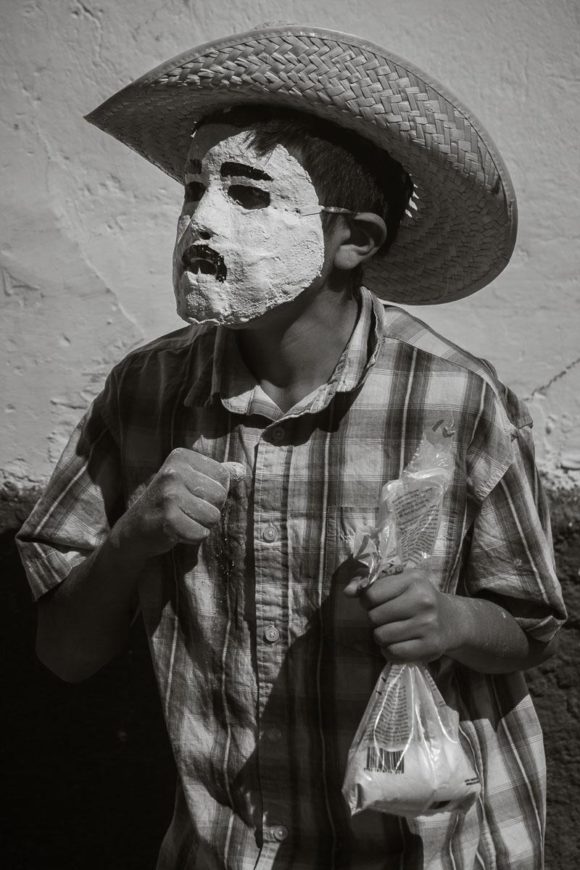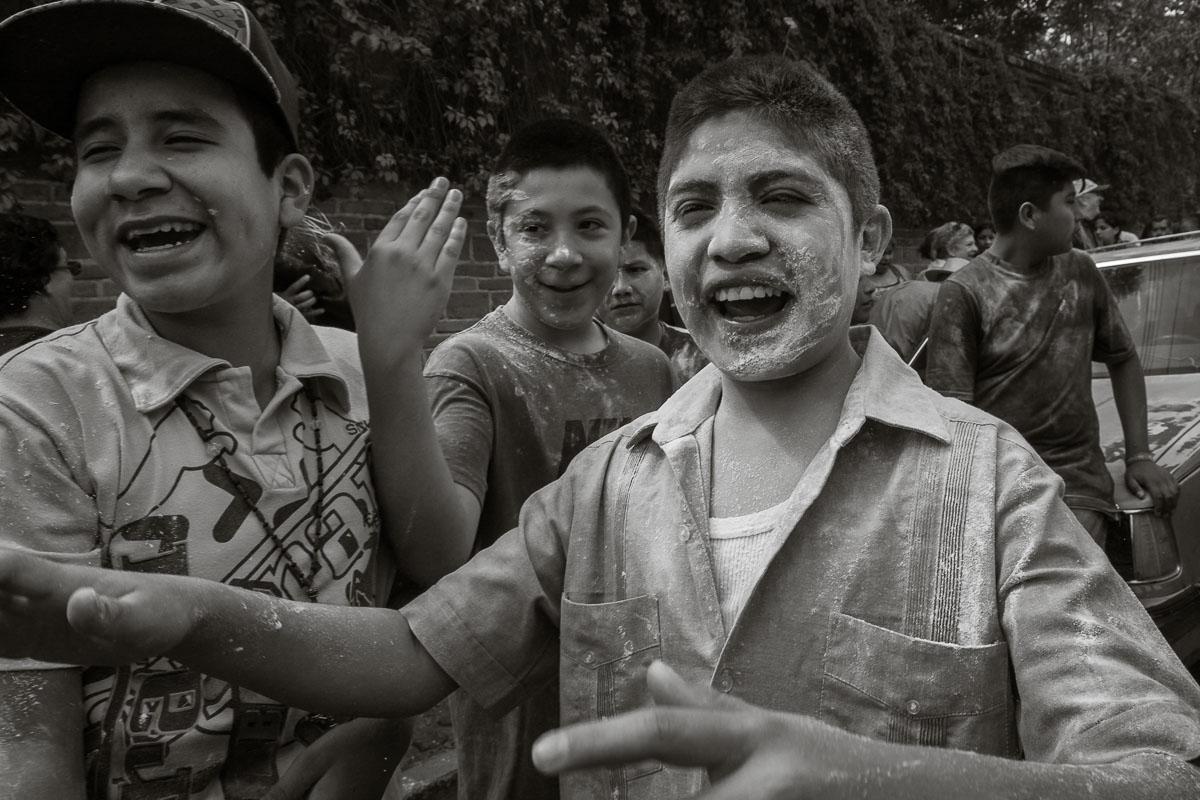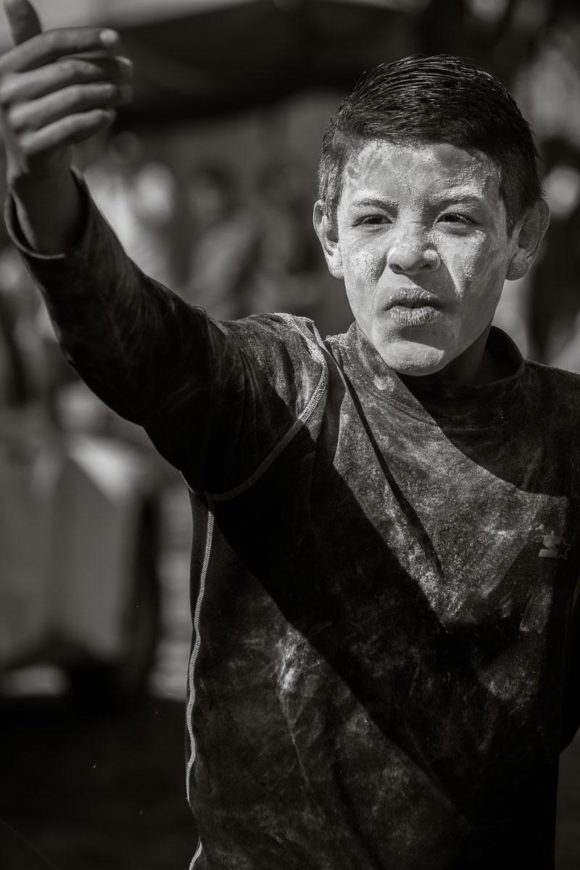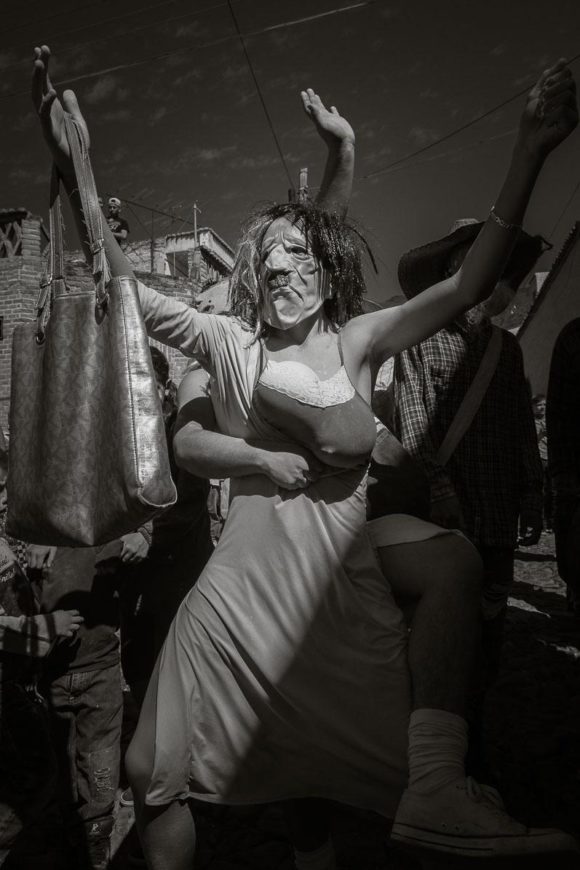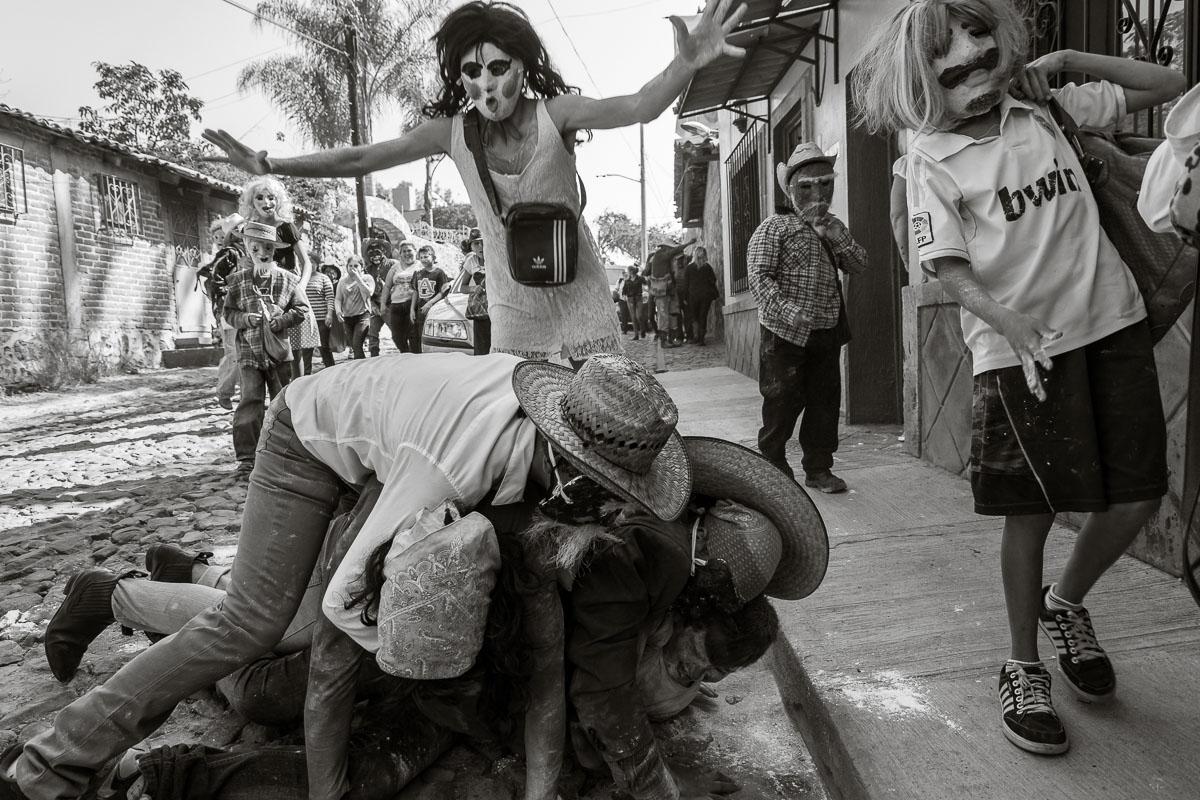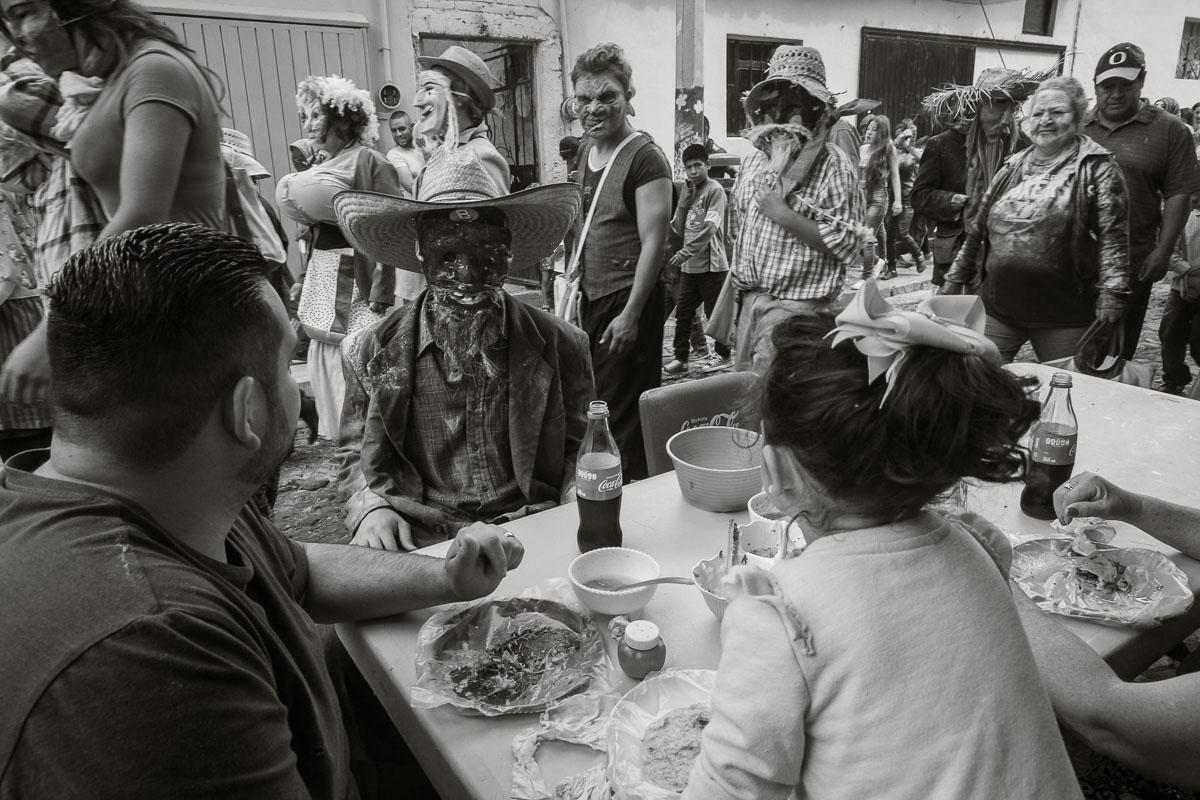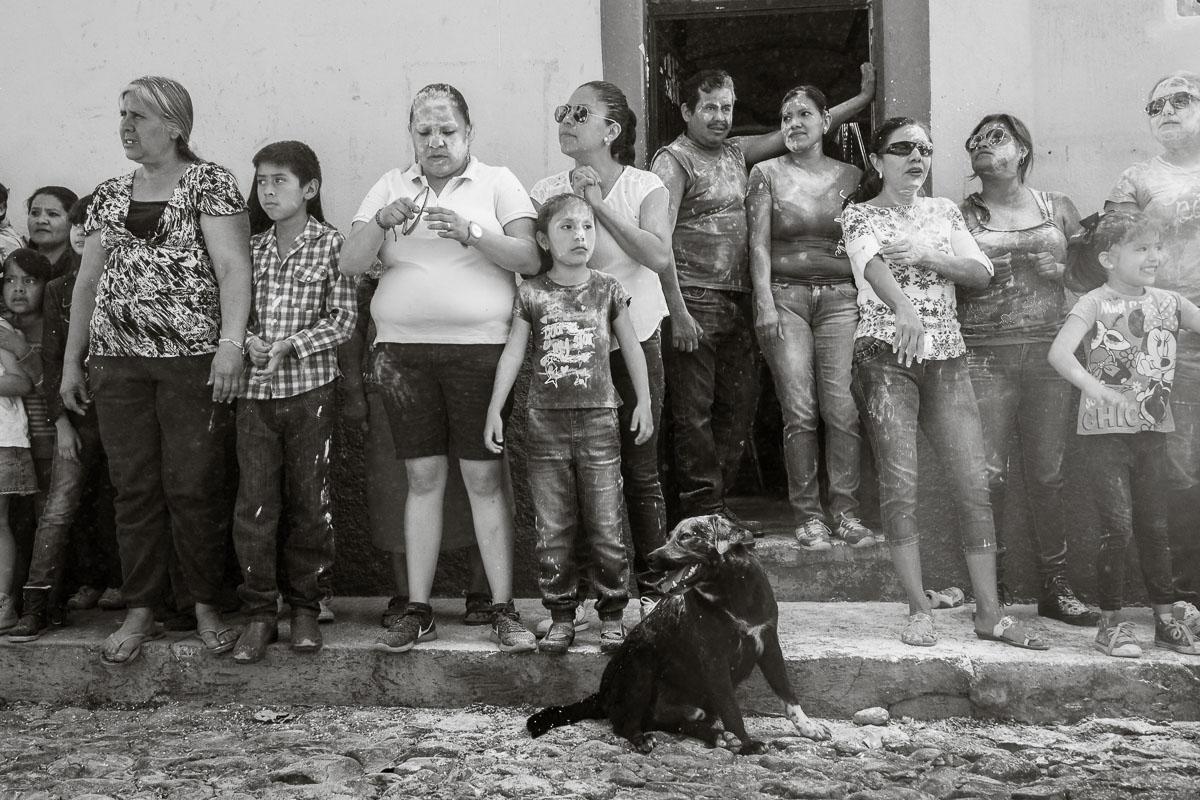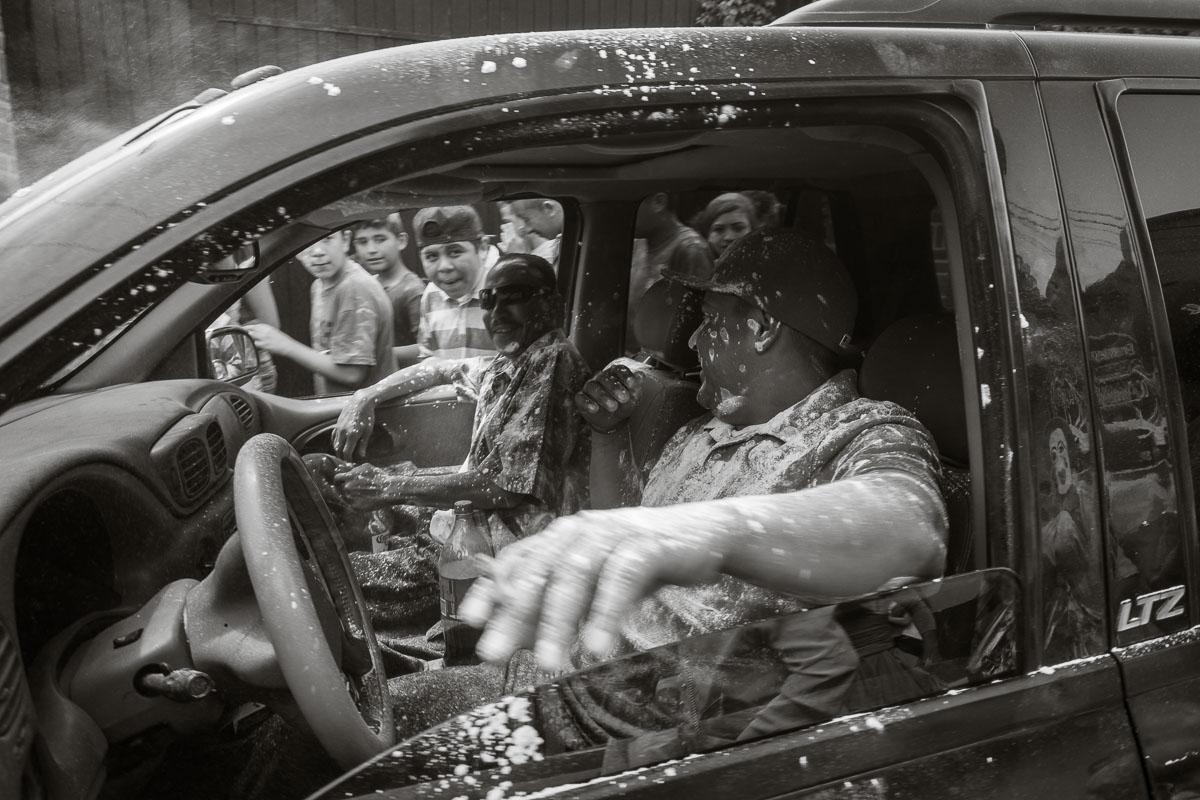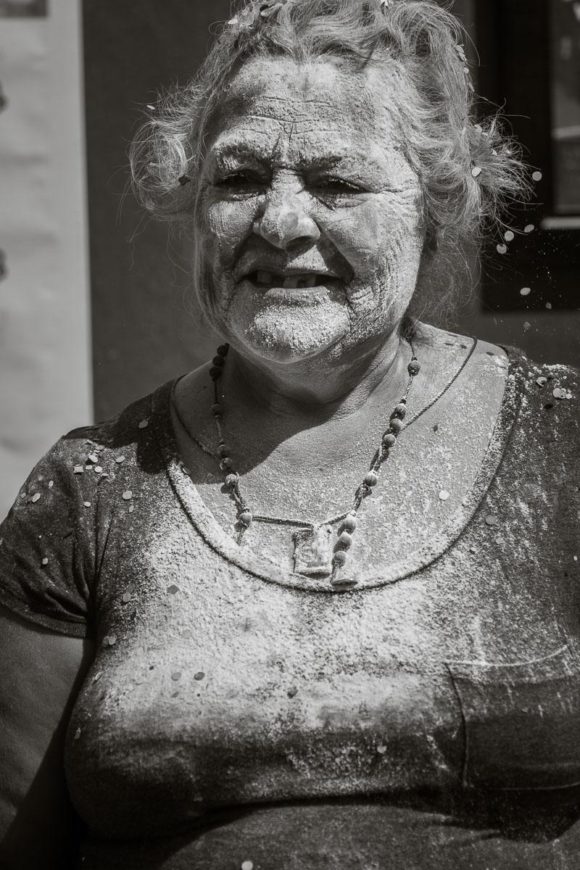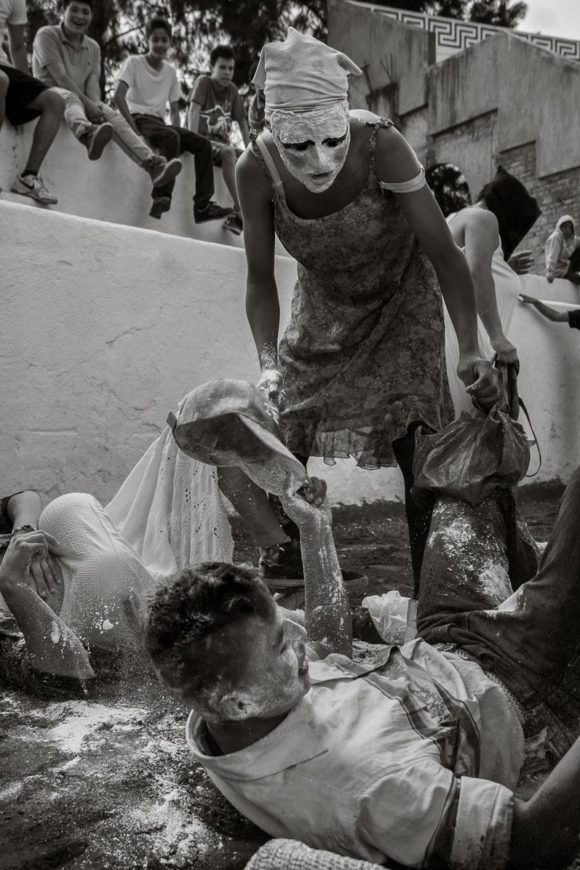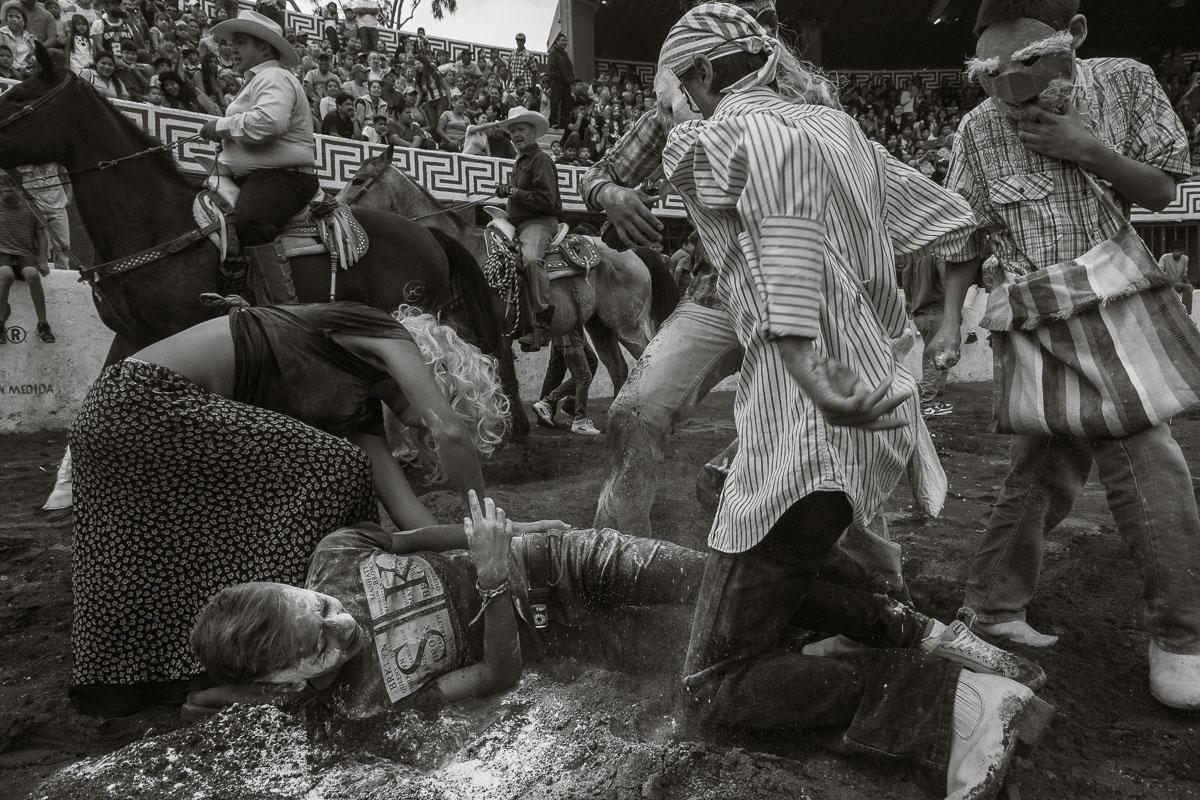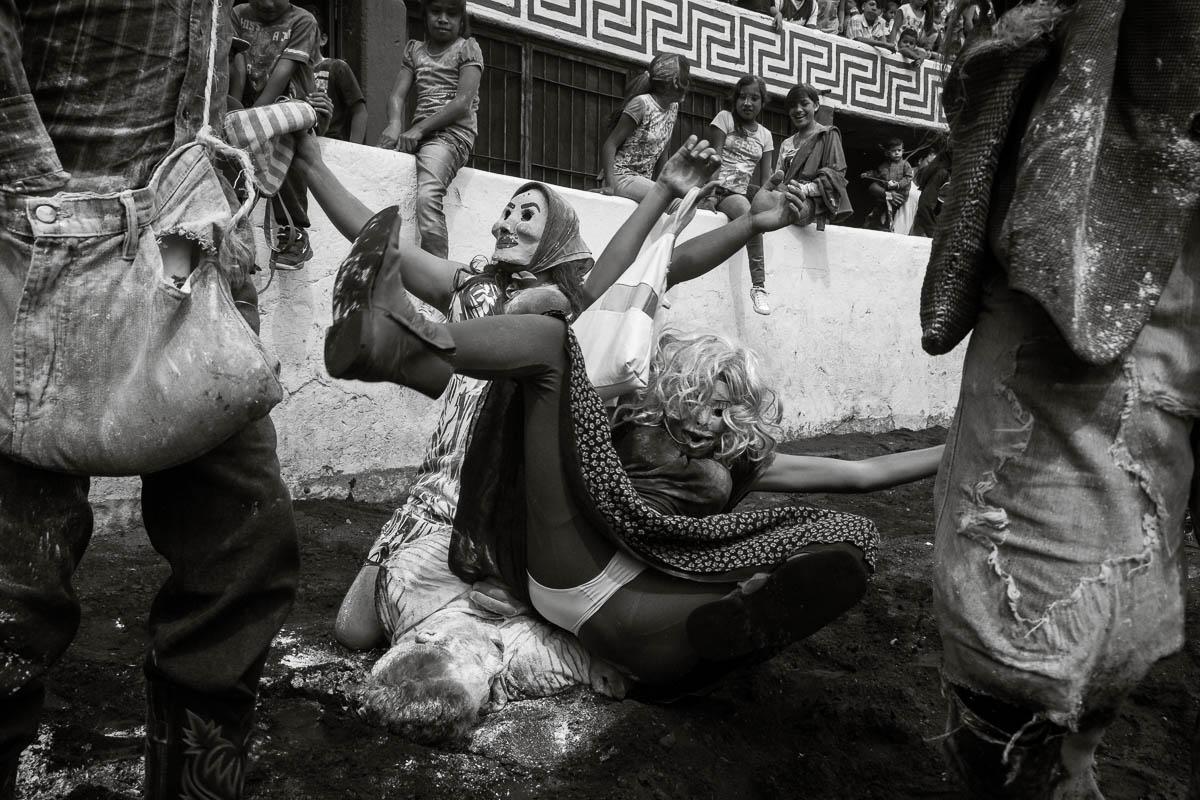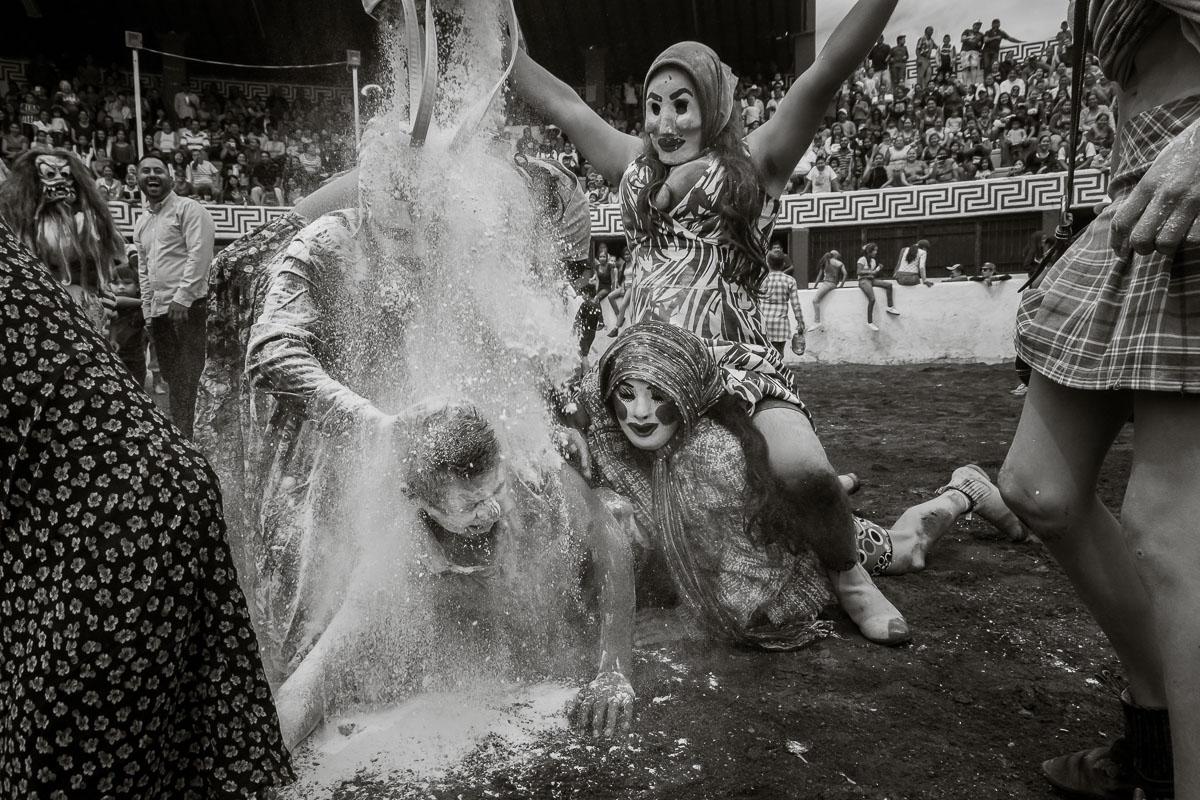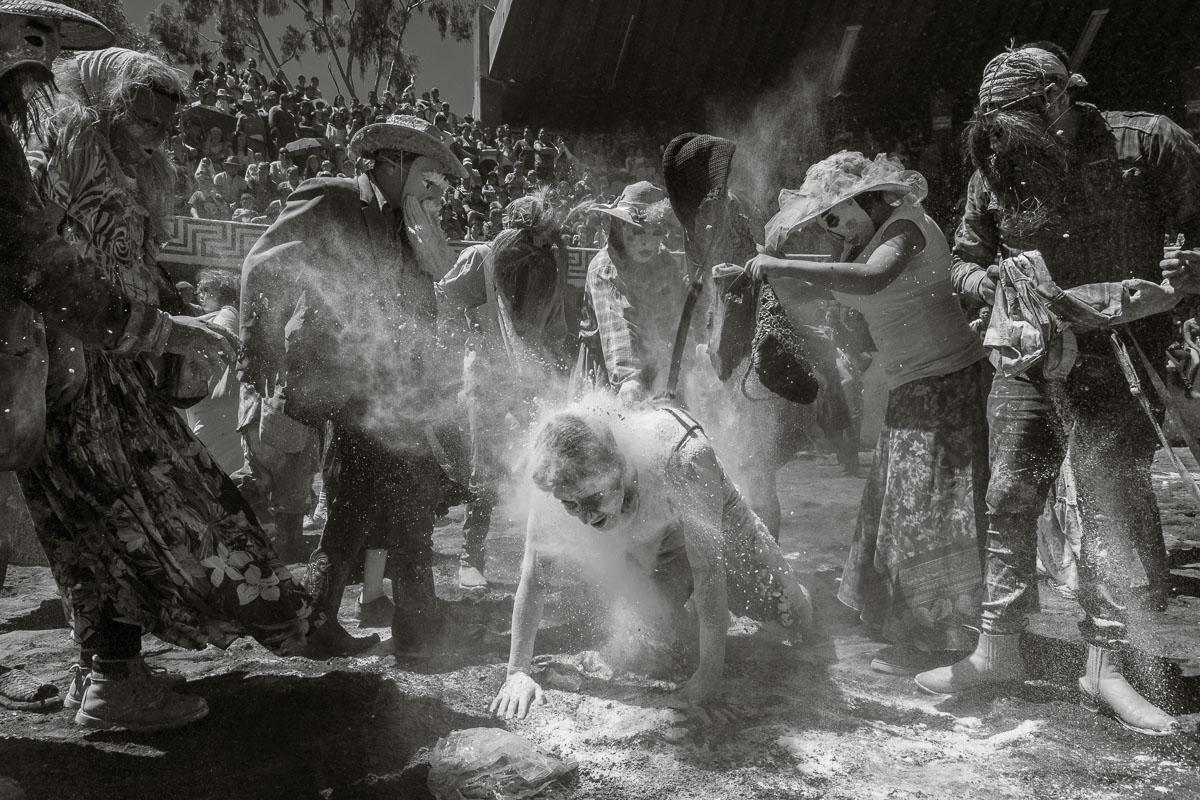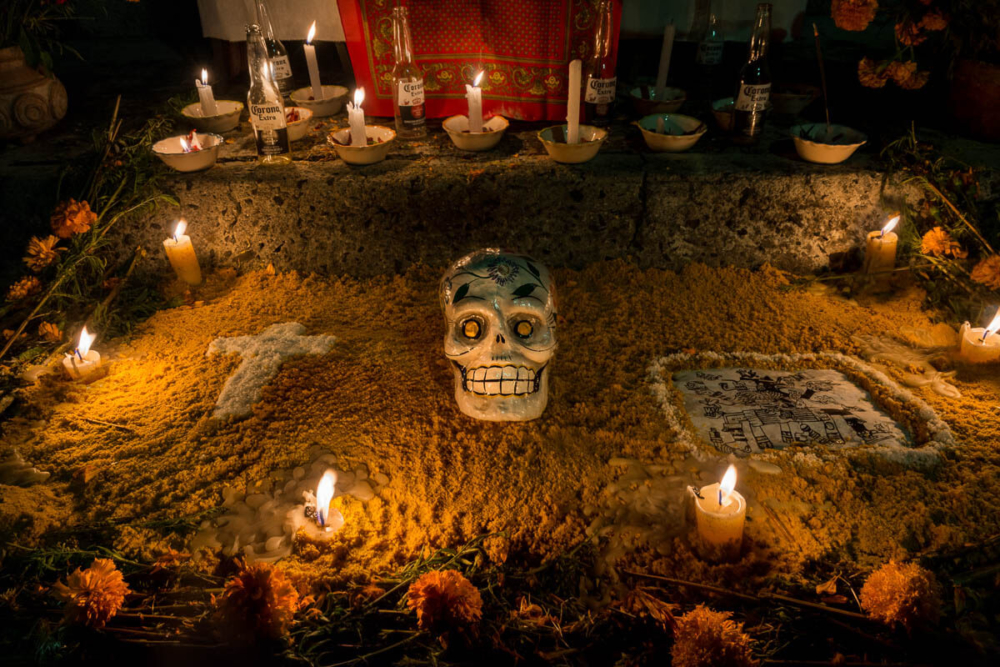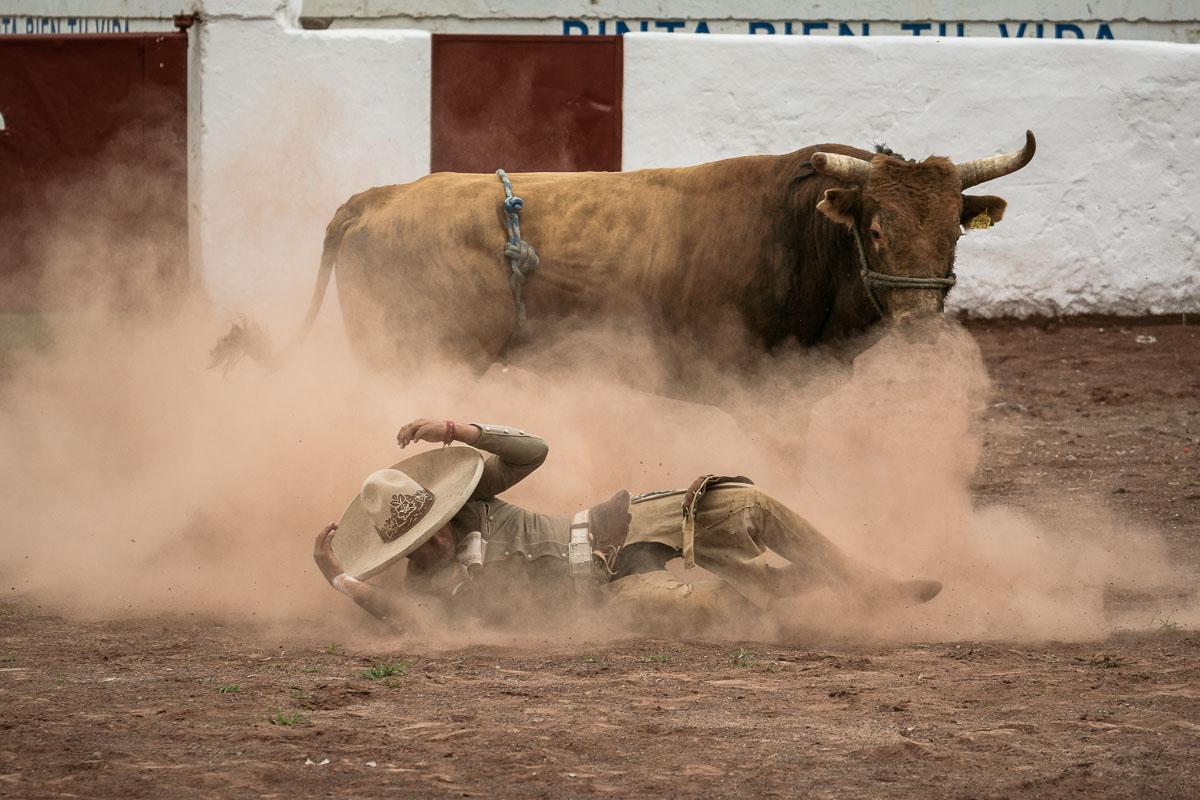The Masked Sayacas of Ajijic, Mexico
These cross-dressing, flour-throwing masked characters chase kids through the cobblestone streets during the town's multi-week Carnival celebrations.
Mexico is a land bursting with culture and traditions, some dating back thousands of years. Despite a constant bombardment of external influences, from Spanish invaders to its present-day neighbors to the north, the country’s customs remain a part of everyday life for many people, especially outside of the modern-day clamor of the city. Holidays such as Day of the Dead are nationally observed, but after six years of living in Mexico what I have found most interesting are the hundreds of local, mostly unknown traditions you’ll find in different towns across the country.
Among the thousands of pueblos in Mexico, it seems that each has at least one unique custom to call its own. Most people outside of Ajijic, Jalisco, have never heard of the town’s tradition of the sayacas, not even those who live in one of the nearby villages.
The sayacas appear each Carnival in Ajijic to the delight and horror of the kids living there. During six days of parades, they put on masks and dress in women’s clothing, which they stuff with shapely balloons. Then they chase kids through the streets, tackling them on the hard cobblestones and rubbing their faces with flour. It’s a recent tradition which the town started in the 1960s, and it helps people let off steam before the 40 days of Lent.
It also serves as an opportunity to cross the established boundaries of both age and sex. Young kids will chase down older ones or be daring enough to throw flour on an adult. Teenagers will use the opportunity to flirt with the opposite sex or shove a fistful of flour into the face of their longtime crush.
The sayaca activities are still dominated by boys and young men, who naturally enjoy and augment the inherent roughhousing aspects of the events. Originally, girls did not participate either as a sayaca or as one of the kids who gets chased through the streets. But this has changed and girls and women can now do as they please. Fathers accompany their very young daughters in the many parades and older girls show up by themselves or with groups of amigas to take part in all the fun.
Though traditions from different parts of Mexico might be unknown to each other, each one can still be recognized as being distinctly Mexican. Collectively they remind us that as a single country is able to unify itself through its diversity, in spite of the world’s many cultural differences we are all built from the same human stuff.
